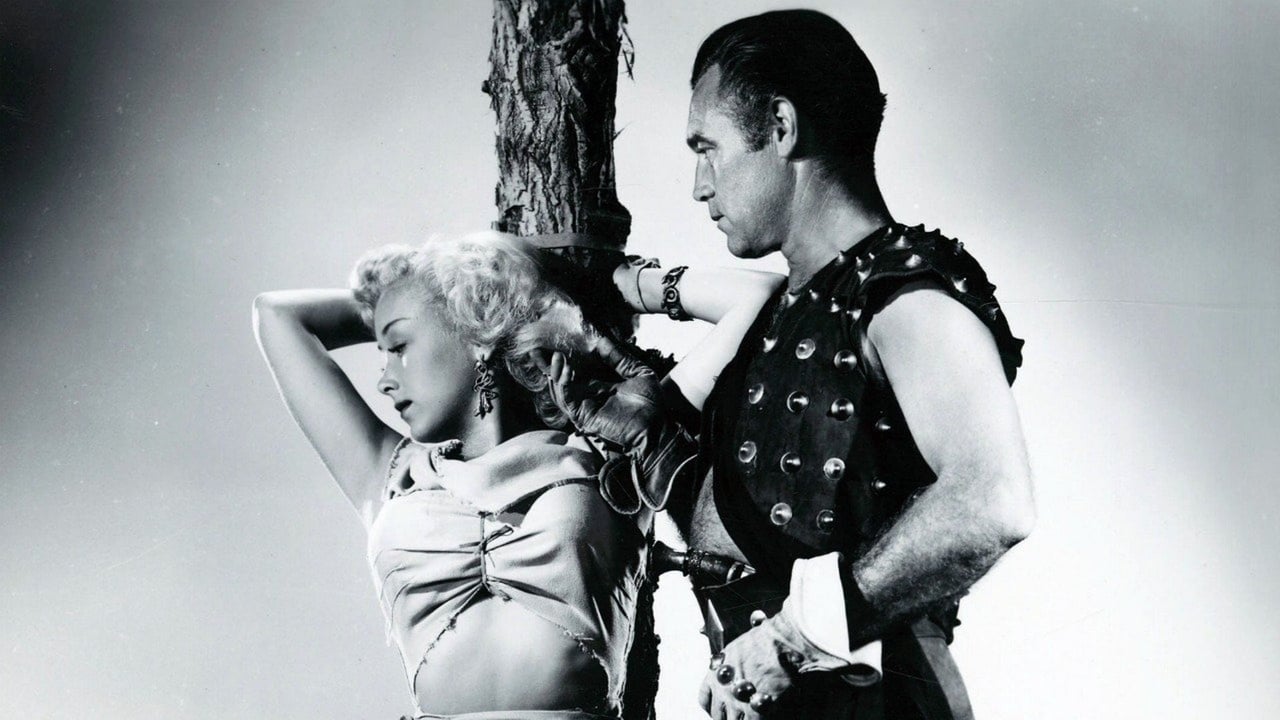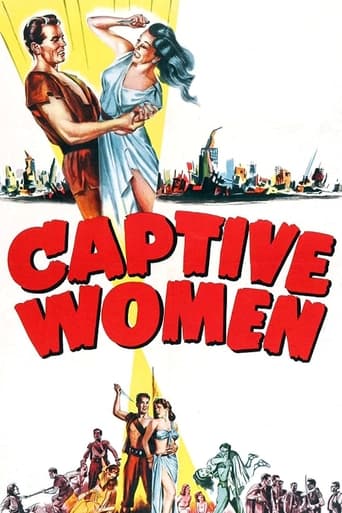

A thought-provoking morality tale involving the dangers of atomic power, the thin veneer of civilization, and the pitting of good forces vs. bad ones. The apocalyptic glimpses of New York City in ruins (courtesy of matte painter Irving Block) and the quasi-Medieval/ancient Mediterranean costumes were definitely inspired by the science fiction pulp magazines of the 1940s, as well as the script. Acting fairly good, especially by Margaret Field (mother of Sally). The action moves swiftly, the sets are imaginative (especially the sewers where the Norms live and the tunnel that is beneath the river) and the film has a mood of haunting sadness that stays with one. A fairly expensive-looking production from producers Pollexfen, Wisberg, and Zugsmith, certainly costing more than Pollexfen and Wisberg's previous Sci-Fi classic, The Man from Planet X.
... View More"Captive Women" seems to be mostly notable for being the first movie to play with the idea of a post-atomic war society. Most films from that time just assumed that atomic war would be the end of the world and humanity, but this film actually posits three competing groups of humans and mutants living in the wreckage of New York city in the distant future. For being the first movie story tellers to try such a thing, the people behind "Captive Women" have a place in cinematic history. Too bad the movie itself is a bit of a dud.I'm not just saying that because I am accustomed to the pacing, budgets, and more expansive conventions of later science fiction films. I saw "The Man From Planet X", also from 1952, with many of the same actors, and thought it was a great little film - its only real flaw was that it lost some focus and momentum for about 15 minutes in the 2nd half. Despite its very original idea for a plot, "Captive Women" isn't nearly as good. Having come up with an amazing scenario for post-nuclear existence, the screenplay proceeds to fritter its capital away with stilted fake Elizabethan dialog, lots of walking scenes, flat acting, half-baked fight choreography, and a confusing jumble of events and character decisions that make little sense. In fact, watching this, I was strongly reminded of the work of noted movie "hack" Roger Corman - specifically his turgid and indigestible movie "The Undead". I'm sure Corman hadn't started his film career when this movie was made, but as my friend remarked when I brought this up, "Yeah...it's like Corman watched this movie and said to himself, "Oh boy! I CAN DO THIS!!!" My favorite quibble with the slapdash, shoddy way this movie is put together is the way it handles "religion" and the search for meaning; one character from the "Uphill Tribe" mentions in a line of dialog that his tribe abandoned God and now "worships Satan(!!!)" instead. That's a very radical revelation, one that could potentially set up a clash of world views that could generate amazing conflict and contrasts. And yet the screenplay just lets that assertion gather dust for the rest of the movie. Instead, it becomes all about getting the breeding pairs, er, "Captive Women" back. Also, the seemingly exploitation oriented title is a misnomer...the "Captive Women" are captured in a raid all right, but after one group captures them, the first group captures them right back. The UK title, "3000 AD" was a lot more true to the film's real intent, what little there was. I'm not sorry I took the time to watch this, but I'm pretty sure that even back then, this dull little number probably got trounced pretty throughly as a piece of 2nd rate film making.
... View MoreAs I have stated elsewhere in this forum, film firsts should be noted and applauded even if the films they appear in are otherwise unremarkable. The vaguely titled CAPTIVE WOMEN is set in a post nuclear holocaust world where three warring tribes, "The Norms", "The Mutates", and "The Upriver People" battle each other for supremacy in and around the ruins of New York City and its environs in the year 3000. CAPTIVE WOMEN is the first film about the long term effects of nuclear war and how a nuclear war would drastically alter human society. ROCKET SHIP XM (1950) touched on this slightly, with it's nuclear war destroyed Mars and it's remaining Martians reduced to savage cavemen. In 1951 there was FIVE, but all that happened in that film was that a nuclear war reduced the number of people down to five. The plot of a nuclear war resulting in mankind being reduced to warring tribes turns up often in many later post nuclear war films, so often that it has become a cliche. Think of MAD MAX and its countless sequels and imitations. This plot was first introduced here.However, the premise, new to films at the time, is really the only main point of interest. This story of warring tribes is rather slow going, even at a scant 64 mins. The cast looks want of direction, and most of the performances are over the top. The film is talky. The dialog is stilted and pretentious. Most of the film seems to take place at night, probably to hide the inadequate sets. The producers of this film also made THE MAN FROM PLANET X the year before on the same budget level as this, and cast some of the same people from that film. However, instead of bringing back Edgar G. Ulmer as director, they hired Stuart Gilmore, who seems to show little signs of pictorial imagination. The only interesting scene is a brief shot of the twisted, destroyed ruins of NYC. The only other point of interest is the presence of a very young Ron Randell as Riddon.Before this film was purchased by RKO, it was titled 1000 YEARS FROM NOW, and was called 3000 A.D. in England. RKO studio head Howard Hughes dreamed up the title CAPTIVE WOMEN, which to me conjurs up images of some tawdry women in prison film and not a science fiction. Perhaps Howard thought his title had more pizzazz or something.
... View More